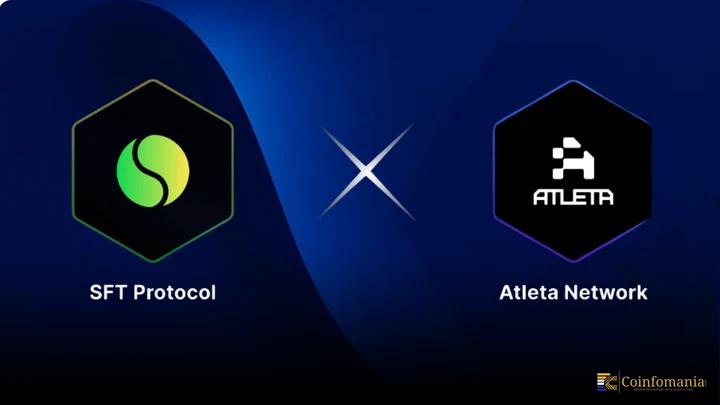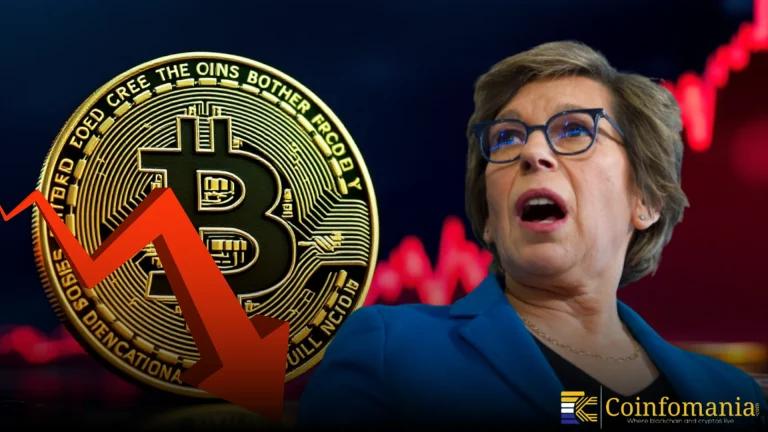SFT Protocol Partners with Atleta Network to Power Web3 Sports Infrastructure
Explore the SFT network and Atleta Blockchain partnership, transforming sports and Web3 through decentralized infrastructure.

Quick Take
Summary is AI generated, newsroom reviewed.
SFT Protocol and Atleta Network announced a partnership to merge blockchain infrastructure with sports-focused digital ecosystems using DePIN technology.
The collaboration integrates SFT’s asset liquidity solutions with Atleta’s modular blockchain, supporting high-speed transactions and decentralized sports applications.
This partnership aims to develop secure, scalable Web3 tools that bridge physical infrastructure and digital ownership across the global sports industry.
On May 14, SFT Protocol announced a partnership with Atleta Network on X. Atleta is a modular, EVM-compatible blockchain built with Substrate in Rust for sports, asset tokenization, and decentralized markets. It offers 80 transactions per second. It has processed over 24 million transactions and supports 900,000 wallets. The post said SFT’s DePIN power for storage, compute, and CDN will boost Atleta’s sports digitization mission. Minutes earlier than SFT, Atleta Blockchain shared an X post calling SFT the first fully generalized DePIN DAO and Chain of Chains. Together, they will bridge physical infrastructure and Web3.
Integrating Real-World Infrastructure and DeFi with SFT Protocol
The SFT network solves a key blockchain finance issue. It addresses low liquidity for long-term locked assets. Users stake native tokens to mint SFT tokens. Those tokens can work in many financial actions. They support staking, DAO voting, and lending. They also manage hardware resource allocation. The protocol secures devices for real-world returns. It ties infrastructure use with on-chain value. This blend links physical assets with decentralized finance. These SFT tokens allow fresh ways to use locked assets. Investors get access to liquid tokens backed by real hardware.
As a core idea, the Chain of Chains guides the SFT network. It links hardware resource pools with Web3 service demand. Coins from different chains can be traded in this market. The design adapts over time to add more hardware. It can also bring in off-chain services like AI compute. This variety aims to smooth revenue across market swings. The model keeps control decentralized. New blockchains and tools can plug in easily. This setup supports future growth and resilience. Users get more choices for computing and storage. This flexibility helps handle changing demand patterns.
Secure Data Sharing Across Chains for Sports and IoT
ATLETA Blockchain is a modular solution for sports asset tracking. It focuses on execution, sharing data across chains, and storage. Its system includes EVM-compatible smart contracts. It also has a cross-chain communication layer. A decentralized storage part keeps data secure. This design lets apps scale smoothly. It boosts transparency and trust. These goals match the SFT network’s aims. Both sides value modular, real-world integration. Using this network, developers can deploy new apps fast, increasing Sports Web3 adoption. Users can verify data easily on the chain. It offers clear layers for each function.
SFT Protocol’s DePIN tools bridge devices with blockchain apps. They let device owners tokenize their hardware on-chain. Owners can also manage device identity safely. The network works with many hardware types, from common gadgets to custom builds. For example, community-made systems like Raspberry Pi are supported. These devices can check real-world events on the blockchain. They then earn token rewards for their work. This opens up the use of logistics or sports gear tracking. SFT network tools thus link physical devices with digital services. Many devices send data quickly and securely.
Building the Future of Sports Web3 Integration
In Sports Web3 adoption, this deal could spark new platforms. Developers may build systems that track sports data with sensors. They could then record results securely on the chain. Tokenizing those outcomes makes them tradeable assets. Fans can own digital sports memorabilia tokens. Teams might issue NFT tickets for matches. Data from wearables can feed on-chain apps. This model widens fan engagement and digital ownership. It keeps data verifiable and transparent. This setup blends physical play with blockchain value. It may drive wider sports crypto use.
A Tokenized Future for the Sports Industry
The sports market has many participants, from players to fans. Tokenized infrastructure can verify match outcomes and stats. Clubs could manage player data securely on the chain. Fans, teams, or sponsors might use digital tokens for rewards. It offers open, interoperable tools for various apps. This is not tied to any single token launch. Rather, it focuses on building reliable systems. The goal is to empower innovation without vendor lock-in. It could spur new services in ticketing or fan voting. It sets up a robust layer for future growth.
References
- We’re excited to join forces with @AtletaNetwork — a modular, EVM-compatible blockchain powering the future of sports, asset tokenization, and decentralized markets
- We’re excited to announce our partnership with SFT Protocol — the first fully generalized Decentralized Physical Infrastructure Network (DePIN) DAO, leading the development of the SFT Chain, a "Chain of Chains."
Follow us on Google News
Get the latest crypto insights and updates.


